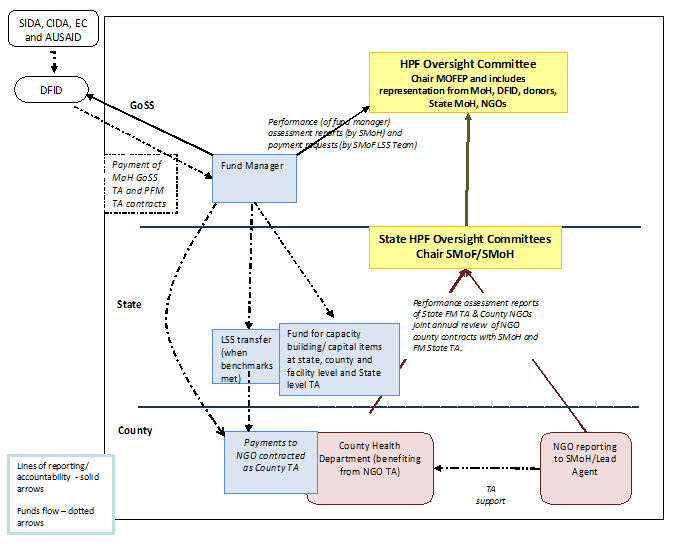Continuing the discussion from Data use observation: some organisations don't use their IATI data, but do use their data:
Looking for an activity co-funded by donors, @matmaxgeds pointed out a health project in South Sudan with pooled funding from Canada, UK, EU, Australia and Sweden.
Looking quickly at the projects published on the websites of Canada, UK and Sweden (haven’t looked yet for EU or Australia), I was interested in the differences both in the data reported and its presentation on the websites. Note that this is NOT the same project reported by 3 donors; rather, they are related projects, all contributing to a single health project/fund in South Sudan managed by DFID (Matt, please rectify if this is not correct).
I suspect each version has some useful features and some shortcomings. I thought it would be interesting to bring this up on Discuss and perhaps get feedback from (potential) users on how best to improve things.
UK: https://devtracker.dfid.gov.uk/projects/GB-1-203109
Sweden: https://openaid.se/activity/SE-0-SE-6-5210008601-SSD-12220
Some observations from my quick look at all 3:
-
Canada says the funds go to DFID, but does not provide DFID’s Activity ID. It says the project ended in 2016, which seems to contradict DFID (but DFID may have extended their project, I didn’t check). Canada codes 3 sectors, one of which is related to gender (reproductive health) which may be useful for some users (including GAC itself). I have not compared the results reported by Canada with those reported by DFID.
-
DFID provides several documents related to the project, where I assume stakeholders could find a lot of information. I did not find any information to the effect that Canada (or others) provided funding (also checked on D-Portal, Canada is not listed among the participating orgs); among other things, this makes it hard for someone to know how much DFID itself put in the project. The sectors coded are different than Canada’s, with the conspicuous absence of reproductive health (which was the priority identified by Canada). There are no details on the recipients of DFID’s funding on the DevTracker, only that they are Crown Agents.
-
Sweden also provides access to many project documents (again, not reviewed). The website says that the funding goes to another government (delegated cooperation) but does not specify which one in the Implementing Org section or in the transaction (though one can find it by glancing at the documents’ titles). I didn’t see an Activity ID for the other government’s project. The SIDA project is coded 100% basic health care.
Having looked at all 3, a reasonably savvy IATI data user would guess that these projects are inter-related. This user would also probably conclude that from the perspective of entering data in South Sudan’s aid system, DFID’s data should be used. Would this be the correct conclusion? How would the contributions from Canada, Sweden etc be reflected in the SS system? (this is an important issue for donors, who fear becoming invisible to partner countries). How savvy do you need to be to make sense of all this, and is it reasonable to expect users to do so? If not, what do we need to improve as a priority?
(I didn’t go into the differences in HOW the information is presented in the 3 websites, but would be interested in feedback - especially on Canada’s, as we are about to review the design.)
(Tagging also @JohnAdams, @carlelmstam, and @markbrough to perhaps comment based on experience in other partner countries)

